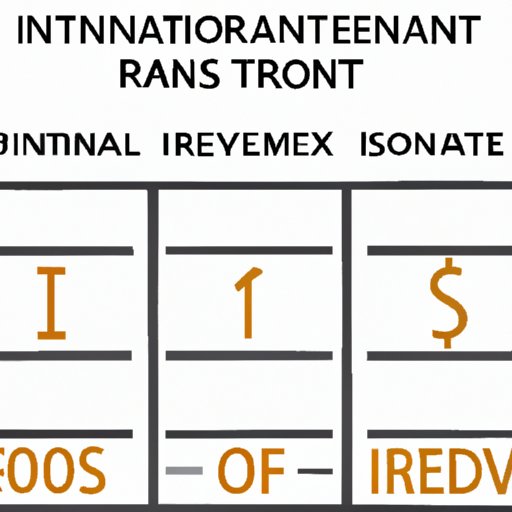Introduction
When it comes to planning for the future, investing is one of the most effective ways to save money and build wealth. But how much will your investment be worth over time? This article explores the different strategies you can use to calculate your return on investment (ROI) and maximize your earning potential.

Calculating Future Value of Your Investment
The first step in calculating the future value of your investment is understanding the concept of compound interest. Compound interest is when you earn interest on your initial deposit as well as the interest that was accumulated in the previous period. In other words, your money grows exponentially over time. By taking advantage of compound interest, you can significantly increase the amount of money you are able to save.
Once you understand compound interest, you can begin to calculate the return on investment (ROI) of your investment. The ROI is the amount of money you make from your investment, expressed as a percentage of the original amount invested. To calculate the ROI, you need to know the initial amount invested, the total amount earned through interest, and the length of time the investment was held. For example, if you invested $10,000 for five years and earned a total of $2,000 in interest, your ROI would be 20% ($2,000/$10,000).
Now that you understand how to calculate the ROI of your investment, you can begin to think about how much your investment will grow over time. The amount of growth depends on several factors, including the rate of return, the length of time the investment is held, and whether or not you are taking advantage of compound interest. For example, if you invest $10,000 at a 10% rate of return for 10 years, with compound interest, your investment will be worth $25,937 by the end of the 10 years.
Exploring Different Investment Strategies to Maximize Returns
In order to maximize your return on investment, it’s important to consider different investment strategies. Investing for short-term vs. long-term goals is one way to optimize your returns. Short-term investments typically have lower rates of return but can be beneficial if you need cash quickly. Long-term investments usually have higher rates of return but require more patience. It’s important to weigh the risks and rewards of each option before making a decision.
Another strategy to consider when investing is analyzing risk vs. reward. Higher risk investments often come with higher rewards, but it’s important to be aware of the potential downside. Taking advantage of tax benefits can also help you maximize your returns. Many investments offer tax breaks that can make them more profitable in the long run.

Estimating the Value of Your Investment at Retirement
When planning for retirement, it’s important to estimate the value of your investments at that time. First, you need to calculate the amount of money you will need to reach your retirement goals. This number can vary depending on your lifestyle and desired retirement age. Once you have determined the amount needed, you can begin to calculate the value of your investments at retirement. You can use online retirement calculators to help you estimate the amount you will have saved by the time you retire.
It’s also important to consider the effects of inflation when estimating the value of your investments at retirement. Inflation is the rate at which the prices of goods and services rise over time. As inflation increases, the purchasing power of your money decreases. This means that the same amount of money will buy fewer goods and services in the future. This should be taken into account when estimating the value of your investments at retirement.
Conclusion
Investing is an effective way to save for the future and build wealth. By understanding the concept of compound interest and exploring different investment strategies, you can maximize your return on investment and estimate the value of your investments at retirement. With careful planning and smart investing, you can ensure that your financial future is secure.
Summary of Key Points:
- Compound interest is when you earn interest on your initial deposit as well as the interest that was accumulated in the previous period.
- To calculate the return on investment (ROI), you need to know the initial amount invested, the total amount earned through interest, and the length of time the investment was held.
- Investing for short-term vs. long-term goals is one way to optimize your returns.
- Analyzing risk vs. reward and taking advantage of tax benefits can help you maximize your returns.
- You can use online retirement calculators to help you estimate the amount you will have saved by the time you retire.
- Inflation should be taken into account when estimating the value of your investments at retirement.
Resources for Further Information:
- Investopedia: Compound Interest
- Investopedia: Return on Investment
- Investopedia: How to Calculate Return on Investment (ROI)
- The Balance: Long-Term Investing Strategies for Beginners
-
(Note: Is this article not meeting your expectations? Do you have knowledge or insights to share? Unlock new opportunities and expand your reach by joining our authors team. Click Registration to join us and share your expertise with our readers.)
